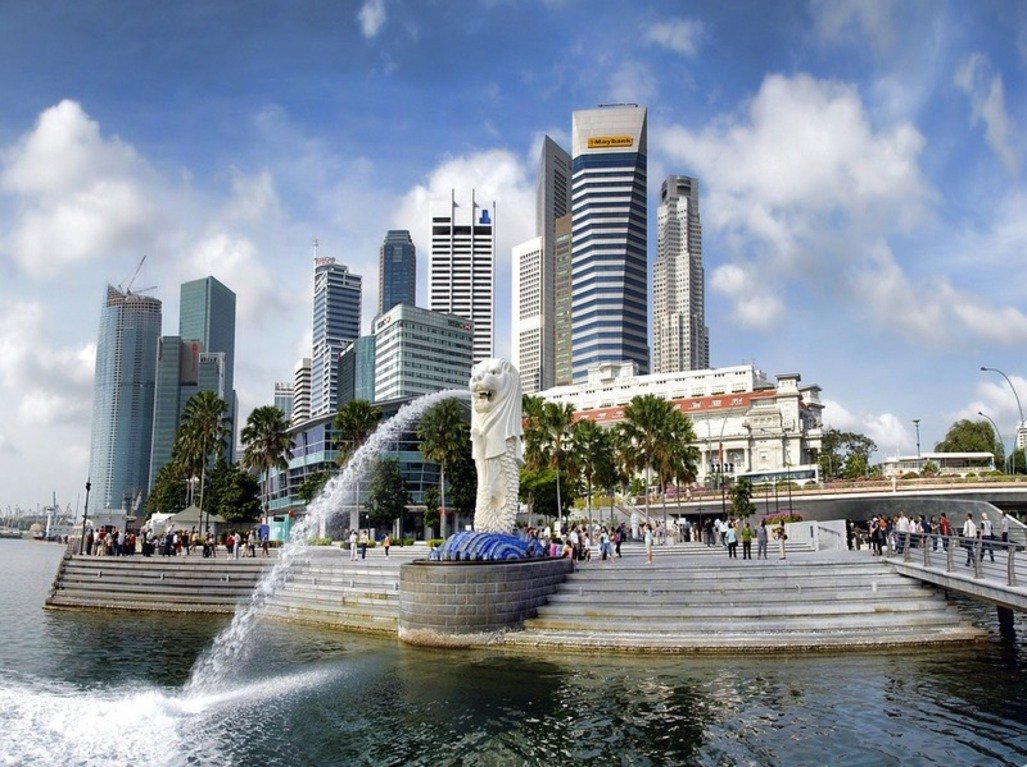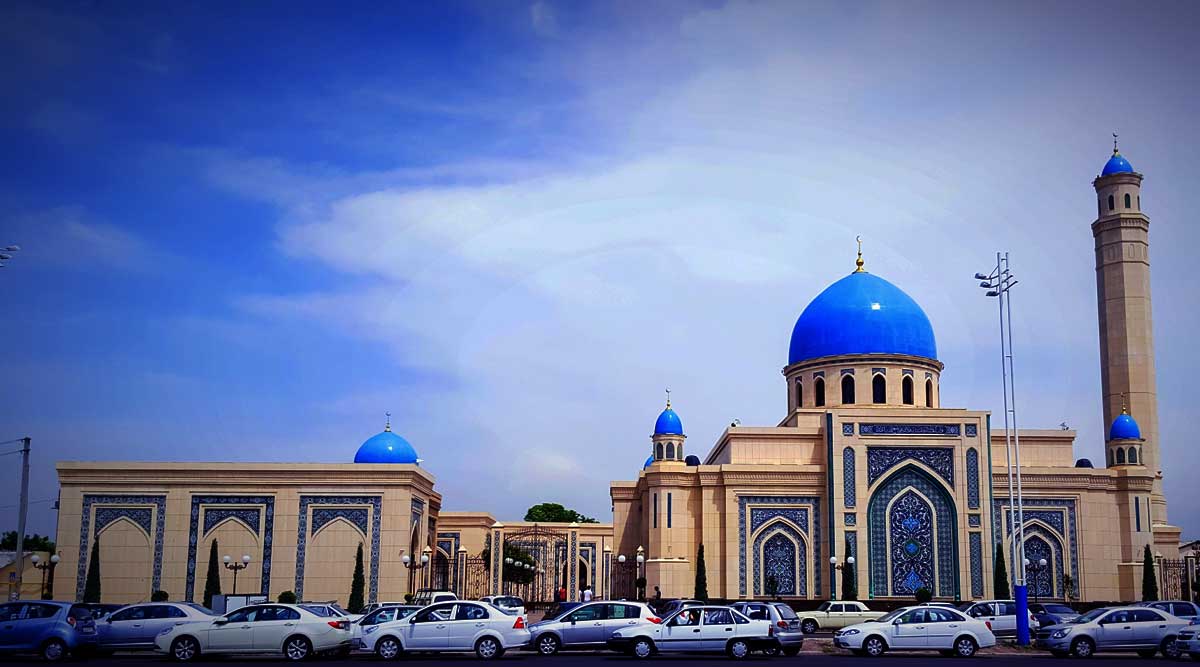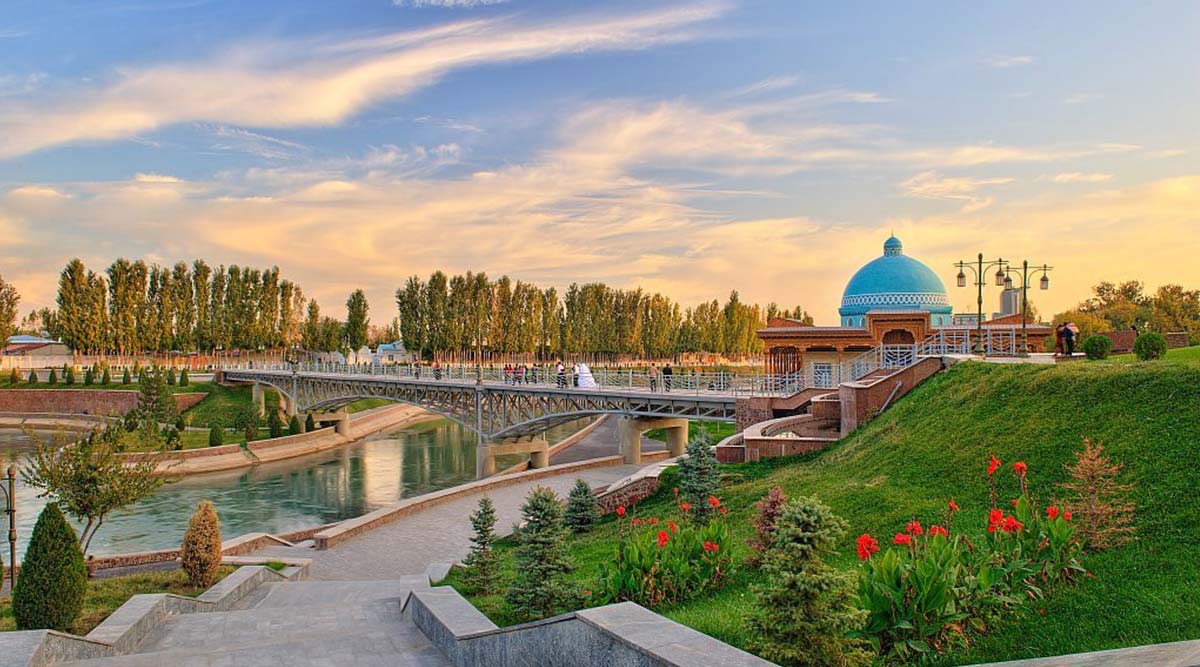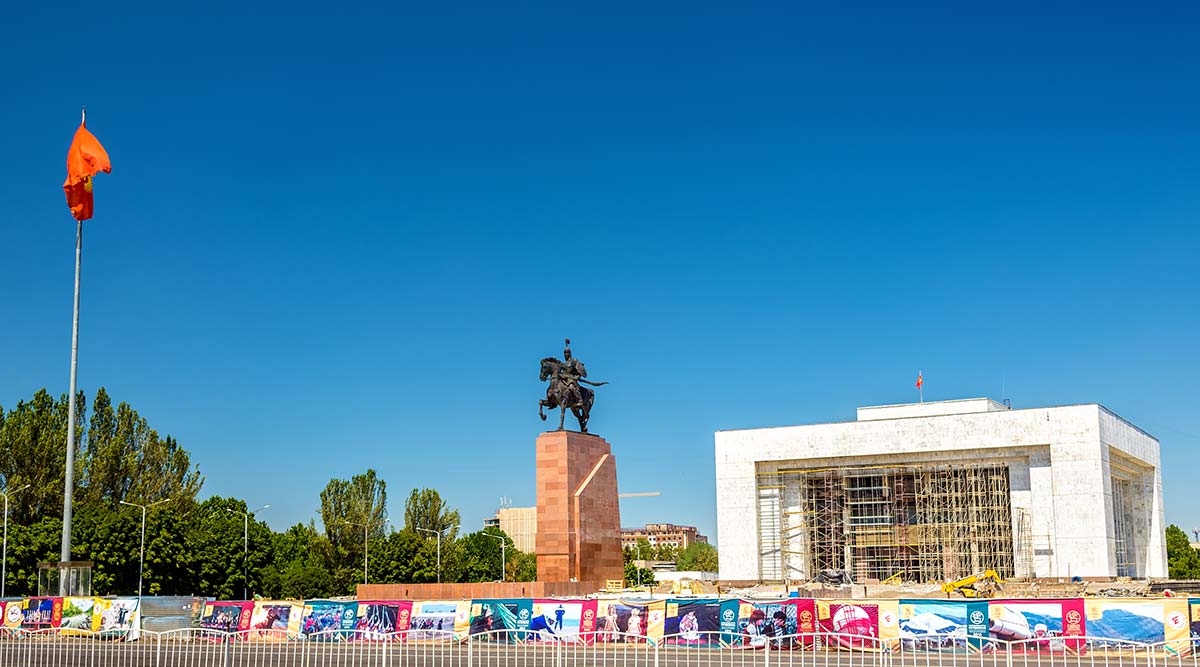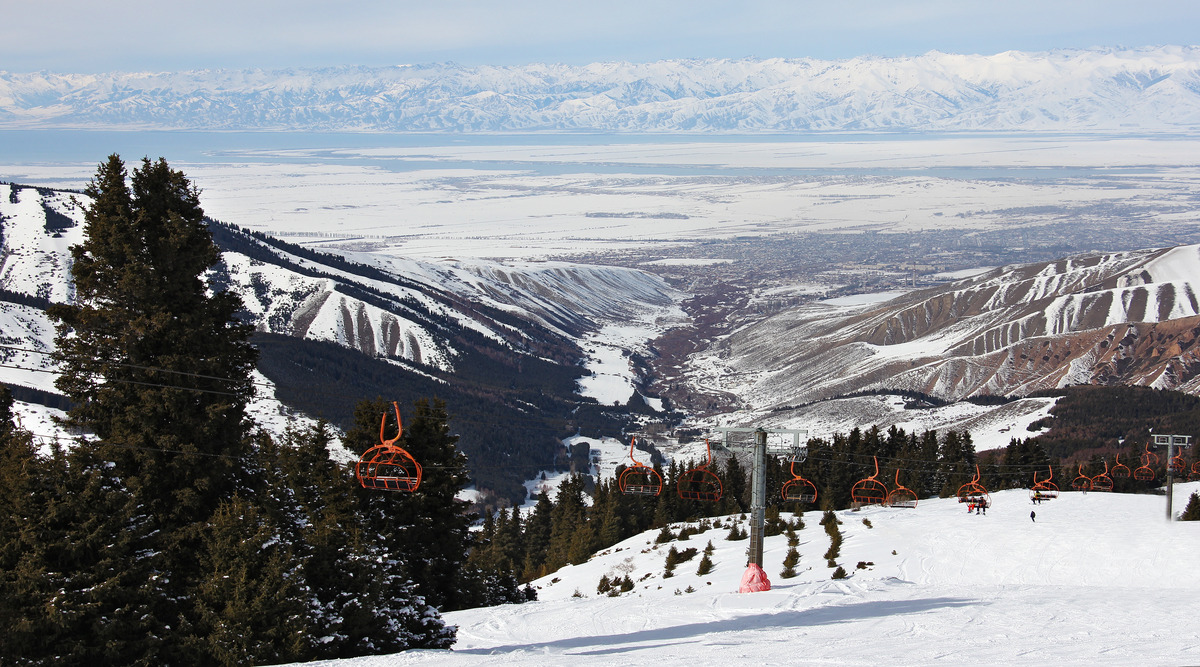Singapore Bintan Island Tour Packages – 5 Nights / 6 Days
Destination Details
- Flight
- Food
- Visa
- Sight Scene
- Travel Guide
- Transport
Package Overview
Singapore, an island city-state off southern Malaysia, is a global financial center with a tropical climate and multicultural population. Its colonial core centers on the Padang, a cricket field since the 1830s and now flanked by grand buildings such as City Hall, with its 18 Corinthian columns. In Singapore's circa-1820 Chinatown stands the red-and-gold Buddha Tooth Relic Temple, said to house one of Buddha's teeth. Bintan Island is part of Indonesia's Riau Archipelago, a short boat ride from the city of Singapore. Its northern Lagoi area is an upscale resort destination offering championship golf courses, secluded beaches and diverse water sports. The northeastern Trikora strip is a less-developed coastline. To the south, the provincial capital, Tanjung Pinang, has Dutch colonial architecture and a rich history as a trade port
Delhi – Singapore (City tour, Optional-Night Safari)
Meals: Dinner
Singapore (Optional-Sentosa island tour)
Meals:Breakfast, Dinner
Singapore – Bintaan Island
Meals:Breakfast
Bintaan Island
Meals:Breakfast
Bintaan Island - Singapore (Optional-universal studios)
Meals:Breakfast, Dinner
Singapore – Delhi
Meals:Breakfast
- 3 nights accommodation in Singapore
- 2 nights’ accommodation in Bintaan Island
- All Breakfasts
- Singapore city tour
- All transfers
- Return airfare with taxes
- Ferry tickets
- Ferry transfers
- Singapore VISA
- 03 Dinner at Indian restaurant
- Air tickets
- Insurance
- Dinners and Lunches
- Alcohol beverages
- Extras in the hotel and during the excursions
Travel Guide

- Singapore
- Singapore
- 718.3 KM²
- 34°C, WIND
- 4:10 PM
- SINGAPORE DOLLAR
- MALAY,MANDARIN,TAMIL,AND ENGLISH
- 5.399 MILLION
General Information About Singapore
Singapore, an island city-state off southern Malaysia, is a global financial center with a tropical climate and multicultural population. In circa-1820 Chinatown stands the red-and-gold Buddha’s Tooth Relic Temple, Little India offers colorful souvenirs and Arab Street is lined with fabric shops. Singapore is also known for eclectic street fare, served in hawker centers such as Tiong Bahru and Maxwell Road. Currency of Singapore

The British, who were extending their dominion in India, and whose trade with China in the second half of the 18th century was expanding, saw the need for a port of call in this region to refit, revitalise and protect their merchant fleet, as well as to forestall any advance by the Dutch in the East Indies. As a result, they established trading posts in Penang (1786) and Singapore (1819), and captured Malacca from the Dutch (1795). In late l818, Lord Hastings, Governor-General of India, gave tacit approval to Sir Stamford Raffles, Lieutenant-Governor of Bencoolen, to establish a trading station at the southern tip of the Malay Peninsula. On 29 January 1819, Raffles landed on the island of Singapore after having surveyed other nearby islands. The next day, he concluded a preliminary treaty with Temenggong Abdu'r Rahman to set up a trading post here. On 6 February 1819, a formal treaty was concluded with Sultan Hussein of Johor and the Temenggong, the de jure and defacto rulers of Singapore respectively. Singapore proved to be a prized settlement. By 1820, it was earning revenue, and three years later, its trade surpassed that of Penang. In 1824, Singapore's status as a British possession was formalised by two new treaties. The first was the Anglo-Dutch Treaty of March 1824, by which the Dutch withdrew all objections to the British occupation of Singapore. The second treaty was made with Sultan Hussein and Temenggong Abdu'r Rahman in August, by which the two owners ceded the island out right to the British in return for increased cash payments and pensions.
The Straits Settlements
Singapore, together with Malacca and Penang, the two British settlements in the Malay Peninsula, became the Straits Settlements in 1826, under the control of British India. By 1832, Singapore had become the centre of government for the three areas. On 1 April 1867, the Straits Settlements became a Crown Colony under the jurisdiction of the Colonial Office in London. With the advent of the steamship in the mid-1860s and the opening of the Suez Canal in 1869, Singapore became a major port of call for ships plying between Europe and East Asia. And with the development of rubber planting, especially after the 1870s, it also became the main sorting and export centre in the world for rubber. Before the close of the 19th century, Singapore was experiencing unprecedented prosperity and trade expanded eightfold between 1873 and 1913. The prosperity attracted immigrants from areas around the region. By 1860, the population had grown to 80,792. The Chinese accounted for 61.9 per cent of the number; the Malays and Indians 13.5 and 16.05 per cent respectively; and others, including the Europeans, 8.5 per cent. The peace and prosperity ended when Japanese aircraft bombed the sleeping city in the early hours of 8 December 1941. Singapore fell to the Japanese on 15 February 1942, and was renamed Syonan (Light of the South). It remained under Japanese occupation for three and a half years.
Towards Self-Government
The British forces returned in September 1945 and Singapore came under the British Military Administration. When the period of military administration ended in March 1946, the Straits Settlements was dissolved. On 1 April 1946, Singapore became a Crown Colony. Penang and Malacca became part of the Malayan Union in 1946, and later the Federation of Malaya in 1948. Postwar Singapore was a contrast to the prewar country of transient immigrants. The people, especially the merchant class, clamored for a say in the government. Constitutional powers were initially vested in the Governor who had an advisory council of officials and nominated non-officials. This evolved into the separate Executive and Legislative Councils in July 1947. The Governor retained firm control over the colony but there was provision for the election of six members to the Legislative Council by popular vote. Hence, Singapore's first election was held on 20 March 1948. When the Communist Party of Malaya tried to take over Malaya and Singapore by force, a state of emergency was declared in June 1948. The emergency lasted for 12 years. Towards the end of 1953, the British government appointed a commission under Sir George Rendel to review Singapore's constitutional position and make recommendations for change. The Rendel proposals were accepted by the government and served as the basis of a new constitution that gave Singapore a greater measure of self-government.
The 1955 election was the first lively political contest in Singapore's history. Automatic registration expanded the register of voters from 75,000 to over 300,000, and for the first time, it included large numbers of Chinese, who had manifested political apathy in previous elections. The Labor Front won 10 seats. The Peoples Action Party (PAP), which fielded four candidates, won three seats. David Marshall became Singapore's first Chief Minister on 6 April 1955, with a coalition government made up of his own Labor Front, the United Malays National Organization and the Malayan Chinese Association. Marshall resigned on 6 June 1956, after the breakdown of constitutional talks in London on attaining full internal self government. Lim Yew Hock, Marshall's deputy and minister for Labor became the Chief Minister. The March 1957 constitutional mission to London led by Lim Yew Hock was successful in negotiating the main terms of a new Singapore Constitution. On 28 May 1958, the Constitutional Agreement was signed in London. Self-government was attained in 1959. In May that year Singapore's first general election was held to choose 51 representatives to the first fully elected Legislative Assembly. The PAP won 43 seats, gleaning 53.4 percent of the total votes. On June 3, the new Constitution confirming Singapore as a self-governing state was brought into force by the proclamation of the Governor, Sir William Goode, who became the first Yang di-Pertuan Negara (Head of State).
The first Government of the State of Singapore was sworn in on June 5, with Lee Kuan Yew as Singapore's first Prime Minister. The PAP had come to power in a united front with the communists to fight British colonialism. The communists controlled many mass organizations, especially of workers and students. It was an uneasy alliance between the PAP moderates and the pro communists, with each side trying to use the other for its own ultimate objective--in the case of the moderates, to obtain full independence for Singapore as part of a non-communist Malaya; in the case of the communists, to work towards a communist take-over. The tension between the two factions worsened from 1960 and led to an open split in 1961, with the pro-communists subsequently forming a new political party, the Barisan Sosialis. The other main players in this drama were the Malayans, who, in 1961, agreed to Singapore's merger with Malaya as part of a larger federation. This was also to include British territories in Borneo, with the British controlling the foreign affairs, defense and internal security of Singapore.
The Malaysia Proposal
On 27 May 1961, the Malayan Prime Minister, Tunku Abdul Rahman, proposed closer political and economic co-operation between the Federation of Malaya, Singapore, Sarawak, North Borneo and Brunei in the form of a merger. The main terms of the merger, agreed on by him and Lee Kuan Yew, were to have central government responsibility for defense, foreign affairs and internal security, but local autonomy in matters pertaining to education and labor. A referendum on the terms of the merger held in Singapore on 1 September 1962 showed the people's overwhelming support for PAP's plan to go ahead with the merger. Malaysia was formed on 16 September 1963, and consisted of the Federation of Malaya, Singapore, Sarawak and North Borneo (now Sabah). Brunei opted out. Indonesia and the Philippines opposed the merger. President Sukarno of Indonesia worked actively against it during the three years of Indonesian confrontation.
Independence
The merger proved to be short-lived. Singapore was separated from the rest of Malaysia on 9 August 1965, and became a sovereign, democratic and independent nation. Independent Singapore was admitted to the United Nations on 21 September 1965, and became a member of the Commonwealth of Nations on 15 October 1965. On 22 December 1965, it became a republic, with Yusof bin Ishak as the republic's first President. Thereafter commenced Singapore's struggle to survive and prosper on its own. It also had to create a sense of national identity and consciousness among a disparate population of immigrants. Singapore's strategy for survival and development was essentially to take advantage of its strategic location and the favourable world economy. Currency of Singapore
What to See
Well you can really have an enjoyable vacation in Singapore with many things to do and sights to see. We set down a list of ten top Attractions and things to do but this list is not exhaustive and there are many other besides. We tell you a little about five of them. East Coast Park Sentosa Island Chinatown Little India Night Safari Telok Blangah Hill Singapore River The Esplanade Downtown East Malay Village
East Coast Park
For those who want the sun, the sand and the sea sports and excitements, head for East Coast Park and you won’t go wrong. From jogging to cycling, swimming to wind surfing, it has all the land and sea sports a sun lover will want. It is also a place where family can have picnic or barbeque. You’ll be spoilt for choice with the various leisure attractions such as bowling alley, golf driving range, tennis and squash courts. You can hire a bicycle or a pair of roller blade and brisk through the entire ‘Gold Coast’ of Singapore. You can blade though a McDonald’s restaurant, a world’s first skate thru outlet, to purchase drinks or ice cream to quench your thirst. And when the hunger pang begins to groan after a day of activities, there are beach side restaurants, bars and pub to go for. The best part is this, there is a seafood centre located at this park. Trying out the famous Singapore chilli crab is a MUST
Sentosa Island
Sentosa offers an alternative to the hustle and bustle of Singapore city. Also known as the Isle of Peace and Tranquility, it is the perfect gateway for weekend trip, family outing or for a honeymoon. The island is located at the southern part of Singapore, it is accessible by car, bus and cable car. By cable car gives you an opportunity to have a bird’s eye view of one of the world’s busiest and best sea ports. You’ll be fascinated and mystified by the Merlion (the symbol of tourism in Singapore). The experience will energise you up. You ascend up Asia tallest observatory tower which gives a spectacular view of Singapore and its southern islands. What goes up must come down, and you can descend down into the Underwater world, one of Asia’s largest oceanariums. This will give you a close encounter with sharks and stingray before you get in touch with the pink dolphins at the Dolphin Lagoon (this place is very well set out but I have to wonder if the animals inside could have benefited from more space and sometimes less numbers). After which go and look at how natural disasters strike at Volcano Land. Running away from the flowing lava, this will keep your heart beat in good condition for Cinemania. A safe heart racing ride at breakneck speed. After all the day’s excitement, unwind at Sunset Bay, one of the many beach bars which also organise foam parties, at dusk. After dining, take a romantic stroll along Siloso Beach and walk across the suspend bridge to a small isle which is the southern most point of continental Asia. Watch marine world goes by while enjoying the sea breeze. Such a perfect day must end on a musical note. Catch the Musical Fountain show. It is a multi sensory show of fire jets, water geysers and computer animation (my personal opinion is this is a very tacky show aimed at selling Sentosa merchandise to children.) For those who does not have enough of Sentosa for one day, there a number of hotels and resorts to stay over night
Chinatown
Chinatown consists of four main districts. Kreta Ayer, Telok Ayer, Tanjong Pagar and Bukit Pasoh, each have there own distinctive flavour. Its history dates back to 1821 when the first batch of Chinese immigrants arrived from Fujian province, China. The result was Singapore’s oldest Hokkien Temple, Thian Hock Keng, which is located here. Also Singapore oldest Indian temple, Sri Mariamman Temple is here too, as the Indian immigrants settle down here first before moving off to Serangoon. Experience the atmosphere of the “wet markets” in the early morning and catch a Chinese Opera before heading for lunch. In the afternoon, shop for Chinese antiques and herb and have a break in between with Chinese tea appreciation session.
Little India
This is your chance to experience India in Singapore. This exciting, noisy and crowded precinct offers another aspect of this multi racial nation. History has it that together with founder Sir Stamford Raffles came 120 Indian assistants. They settled down at Chinatown but the enticement of cattle rearing drew them to reside at Rochor River. Thus, beginning the formation of Little India as we know today. The Little India Arcade and Zhu Jiao Centre are the newly renovated shopping centres. Do not be mistaken that you are in Calcutta as the aroma of spices emerges from restaurants offer some of the best food from there. Also there are shop-houses selling handicrafts, saris and spices. Mustafa Shopping Centre is a popular shopping centre in this area among the local Indians. Be aware that this is not a hassle free shopping experience as shop owners will approach you and start chatting and trying to get you to come in rather than purely browsing and walking past. Learn to say "No", or you will end up chatting to them all day.
Night Safari
This is the world’s first night zoo. The 40 hectares award winning attraction is located right next to the Singapore Zoological Gardens, one of the world’s most beautiful zoos. There are about 1200 animals, from over 100 exotic species from countries like Africa, South America and Nepal and India. There is a 45 minutes tram that takes you round the Safari. If you prefer you can walk along one of the three walking trails. After the walk, you can cool down and enjoy the twice nightly ‘Creatures of the Night show. There is also a selection of food from BBQ's to restaurants.

People Of Singapore
Singapore is a modern miracle because it has built its success on only one resource, its people. Lacking natural resources, Singapore's strength is its hardworking, adaptable, goal-oriented, and resilient population. In fact, it is highly regarded by the Business Environment Risk Intelligence as one of the best labor forces in the world. The annual growth rate for 2002 was 0.8%, including resident foreigners. There are four official languages in Singapore: Malay, Mandarin, Tamil, and English. The working language is English and it is widely spoken and understood. Most Singaporeans are bilingual, speaking both their mother tongue and English. With this mixture of people, Singapore is also a mixture of religions. Its skyline boasts the distinctive minarets of mosques, spires of gothic cathedrals, intricate figurines of Hindu temples, and distinctive roof architecture of Chinese temples. The main religions are Islam, Buddhism, Christianity, Hinduism, Sikhism, Judaism, and Zoroastrians. The population breakdown by religion is: They have the most innocent sense of humor. Buddhism 31.9% Taoism 21.9% Islam 14.9% Christianity 12.9% Hinduism 3.3% Other religions 0.6% No religion 14.5%
Singapore is a country that has only one season and that is summer. Located in the tropical region, it does not have the four seasons that countries in Northern and Southern Hemisphere have. Its climate is most hot and humid with more rainfall during the monsoon season, which from November to January. Even though with more rainfall during the monsoon season, there is still a fair share of sunshine during this period. All you need is to carry a small folder umbrella along in case of the passing shower. Average January temperature is 26ºC. Average July temperature 29ºC. Average humidity is 84.3%.

Currency Of Singapore
The Singapore Dollar is the currency of Singapore. Currency rankings show that the most popular Singapore Dollar exchange rate is the INR to SGD rate. The currency code for Dollars is SGD, and the currency symbol is $. The unit of currency is the Singapore dollar, locally referred to as the 'singdollar', which is made up of 100 cents. Singapore uses 5¢, 10¢, 20¢, 50¢ and $1 coins, while notes come in denominations of $2, $5, $10, $50, $100, $500 and $1000. Singapore also has a $10,000 note - not that you'll see many. The Singapore dollar is, not surprisingly, a highly stable and freely convertible currency.

Nightlife In Singapore
Boat Quay and Clark Quay is Singapore’s entertainment and night life precinct. Geyland is a red light district in Singapore. Something to take note so as not to spoil the evening is the strict dress code for some of the clubs and discotheques. Dress code for such places depends on the crowd it is targeting. Some insist on formal dressing only. Some have a minimum age entry, though it may vary at different clubs. The minimum age for drinking in Singapore is 18 years old.
Language in Singapore
The four official languages of Singapore are Mandarin, Malay, Tamil and English. English is the most common language used and is the language which unites the different ethnic groups. Children are taught in English at school but also learn their mother tongue to make sure they don't lose contact with their traditions. Expatriates and foreigners may encounter language problems in the beginning of their stay in Singapore as many Singaporeans use Singlish to communicate. Singlish is a mix of English with other languages mixed into the English, sometimes phrases can end with funny terms like 'lah', 'leh', mah'. Chinese commonly use their own dialects to communicate, and sometimes, inter-dialect groups don't understand one another's language, as the language is vastly different. Except for Hokkien and Teochew, which have a closer link. The Malays use the language among their fellow races and the Indians speak Tamil. But whatever the race or religion, the country's community unite as one nation, where most religious or racial gaps are being bridged. Singapore English has its origins in the schools of colonial Singapore. In the nineteenth century very few children went to school at all, and even fewer were educated in English. The people who spoke English and sent their children to English medium schools were mainly the Europeans, the Eurasians (people of mixed racial ancestry), some of the small minorities, such as the Jews, some of the Indians and Ceylonese, and also a group of Chinese people usually called the Straits Chinese, who had ancestors of long residence in the region, and who spoke a variety of Malay usually called Baba Malay which was influenced by Hokkien Chinese and by Bazaar Malay. The fact that all these children would have known Malay probably explains why most of the loan words in Singapore Colloquial English are from Malay. The largest group of teachers were Eurasians, and there were also many teachers from Ceylon and India. European teachers were never more than a quarter of the total teaching staff in a school, and they usually taught the senior classes
These Europeans may have been from Britain (which at that time included Ireland) but were also from the USA, Belgium and France. The children in these schools would have been exposed to many varieties of English. In the first twenty years of the twentieth century, English medium education became popular for all groups. Girls started going to school in larger numbers too. By the 1950s nearly all children went to school, and the majority were educated in English. By the 1980s. all education was in the medium of English (with children learning another language alongside English). Singapore English grew out of the English of the playground of these children of various linguistic backgrounds who were learning English at school. As more and more of its people experienced learning English at school, English became widely spoken, alongside Singapore's many other languages. Since Singapore became an independent Republic in 1965, the use of English has increased still further. For many Singaporeans, English is the main language. Many families speak English at home and it is one of the the first languages learnt by about half of the current pre-school children. Nearly everyone in Singapore speaks more than one language, with many people speaking three or four. Most children grow up bilingual from infancy and learn more languages as they grow up. Naturally the presence of other languages (especially various varieties of Malay and of Chinese) has influenced the English of Singapore. The influence is especially apparent in the kind of English that is used informally, which is popularly called Singlish. Singlish is a badge of identity for many Singaporeans. Singlish
Singapore English usually come from other languages spoken in Singapore, especially Malay and Hokkien. Speakers of Singlish are not necessarily aware of which language they are from however: habis - finished makan - to eat chope - to reserve something cheem - difficult, complicated ang mo - a white person rojak - mixed, a mix of liao - finished, the end kiasu - afraid to lose mentality Speakers of Singlish will usually end his sentence with a distinctive exclamation. The three most common are ah, lah, ley and what: OK lah, bye bye. Don't like that lah. You are going there ah? No parking lots here, what. The price is too high for me lah. And then how many rooms ah? It is very troublesome ley. Don't be like that ley! I'm not at home lah. That's why ah.

Mandarin Oriental
Singapore
5 Raffles Ave, Singapore 039797

Hotel Boss
Singapore
Boss St, Singapore 188553











